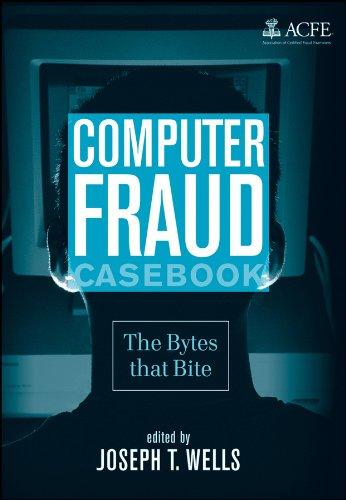Answered step by step
Verified Expert Solution
Question
1 Approved Answer
identified the controls used at the theatre and their purpose identify controls problems and what may be causing the control problems brainstrom some posibilities solutions
identified the controls used at the theatre and their purpose
Leo's Four-Plex Theater was a single-location, fourscreen theater located in a small town in west Texas. Leo Antonelli bought the theater a year ago and hired Bill Reilly, his nephew, to manage it. Leo was concerned, however, because the theater was not as profitable as he had thought it would be. He suspected the theater had some control problems and asked Park Cockerill, an accounting professor at a college in the adjacent town, to study the situation and provide suggestions. Park found the following: 1. Customers purchased their tickets at one of two ticket booths located at the front of the theater. The theater used general admission (not assigned) seating. The tickets were color coded to indicate which movie the customer wanted to see. The tickets were also dated and stamped "good on day of sale only." The tickets at each price (adult, child, matinee, evening) were prenumbered serially, so that the number of tickets sold each day at each price for each movie could be determined by subtracting the number of the first ticket sold from the end number. 2. The amounts of cash collected were counted das and compared with the total value of tickets sold The cash counts revealed, almost invariably, less than the amounts that should have been collected The discrepancies were usually small, less than sio per cashier. However, on one day two weeks befor Park's study, one cashier was short by almost $100 3. Just inside the theater's front doors was a lobby witha refreshment stand. Park observed the refreshment stand's operations for a while. He noted that most of the stand's attendants were young, probably of high school or college age. They seemed to know many of the cus. tomers, a majority of whom were of similar ages, which was not surprising given the theater's small-town loca. tion. But the familiarity concerned Park because he had also observed several occasions where the stand's attendants either failed to collect cash from the custom: ers or failed to ring up the sale on the cash register. 4. Customers entered the screening rooms by passing through a turnstile manned by an attendant who separated the ticket and placed part of it in a locked 'stub box.' Test counts of customers entering and leaving the theater did not reconcile either with the number of ticket sales or the stub counts. Park found evidence of two specific problems. First, he found a few tickets of the wrong color or with the wrong dates in the ticket stub boxes. And second, he found a sometimes significant number of free theater passes with Bill Reilly's signature on them. These problems did not account for all of the customer test count discrepancies, however. Park suspected that the ticket collectors might also be admitting friends who had not purchased tickets, although his observations provided no direct evidence of this. When his study was complete, Park sat down and wondered whether he could give Leo suggestions that would address all the actual and potential problems, yet not be too costly. This case was prepared by Professor Kenneth A. Merchant. Copyright by Kenneth A. Merchant identify controls problems and what may be causing the control problems
brainstrom some posibilities solutions to control problems that have been identified 



Step by Step Solution
There are 3 Steps involved in it
Step: 1

Get Instant Access to Expert-Tailored Solutions
See step-by-step solutions with expert insights and AI powered tools for academic success
Step: 2

Step: 3

Ace Your Homework with AI
Get the answers you need in no time with our AI-driven, step-by-step assistance
Get Started


